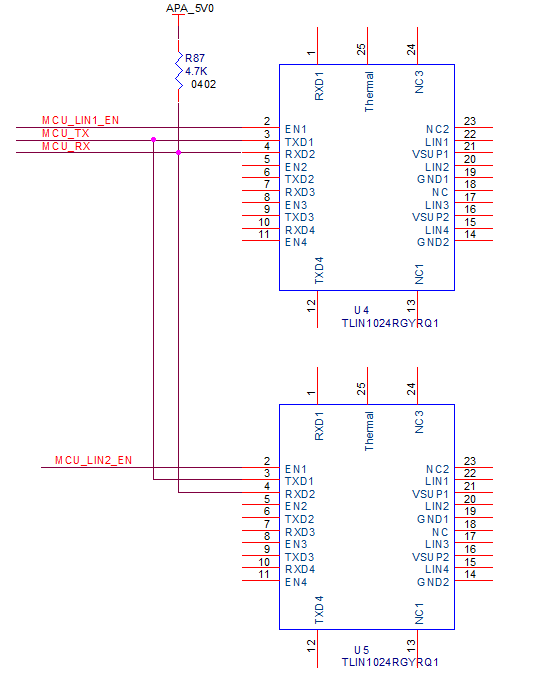Hi team,
Can we use TLIN102x like this? Shared TX and RX input, but with dedicating EN pin to select one of the devices to work.
I checked the block diagram, it looks that will be ok.
How about for TCAN device? Will it work? Because it's TX and RX structure is different, i just put one of the CAN into standby mode and use a parallel one.
Dongbao


